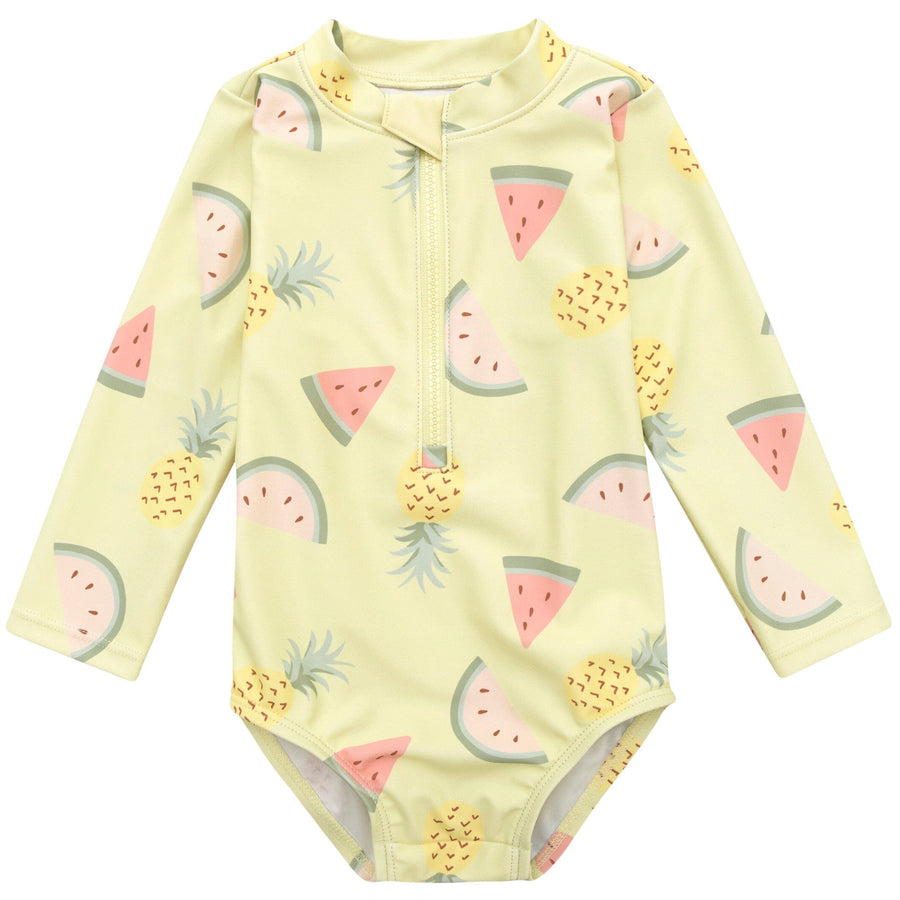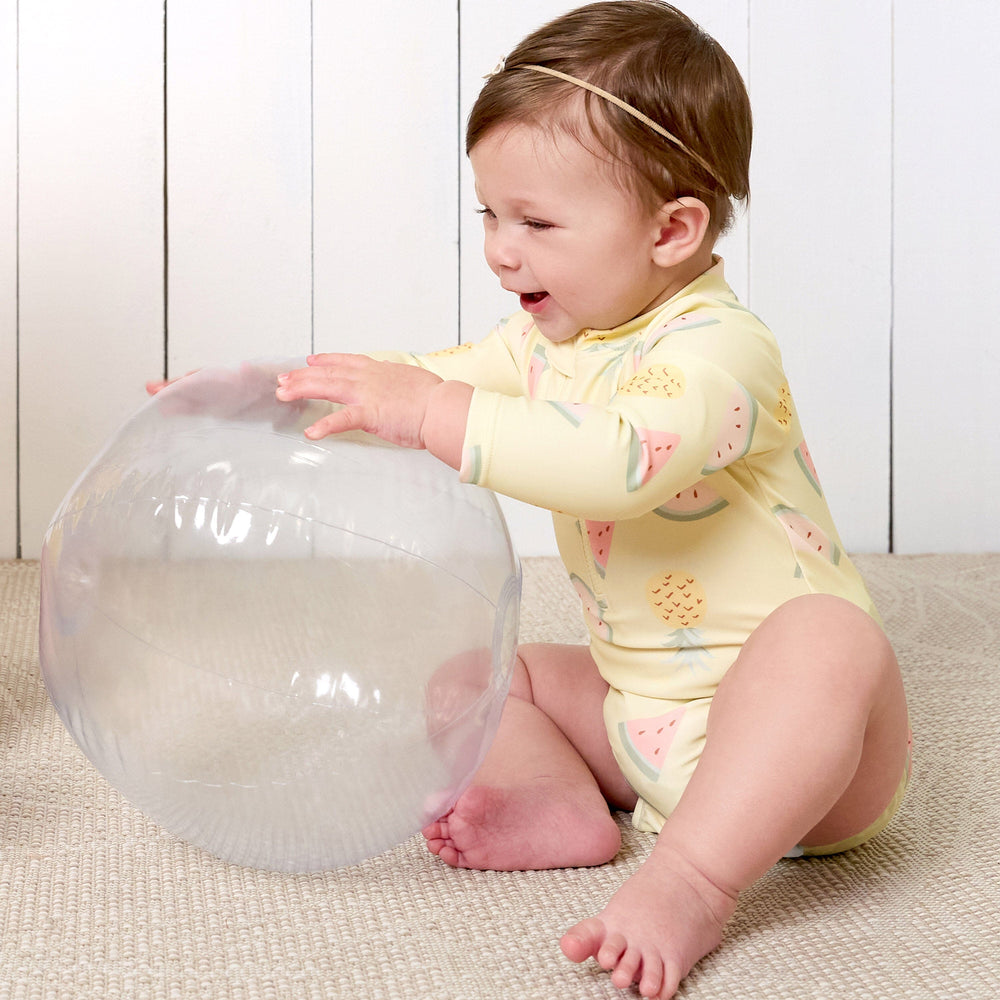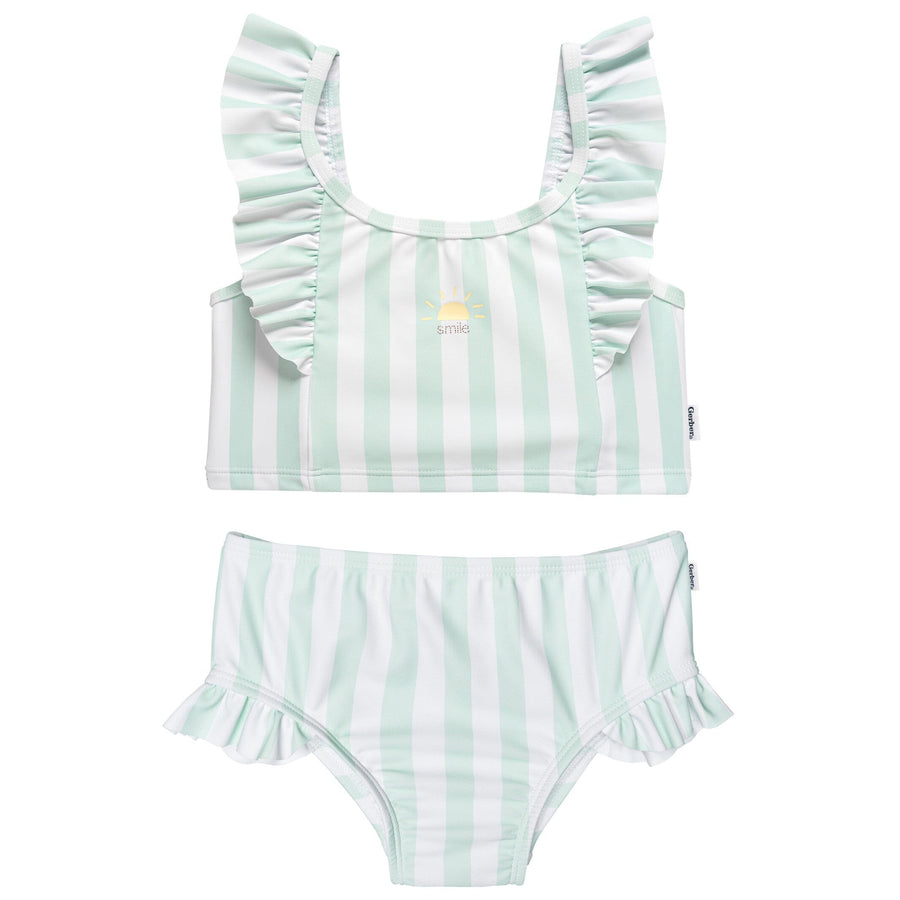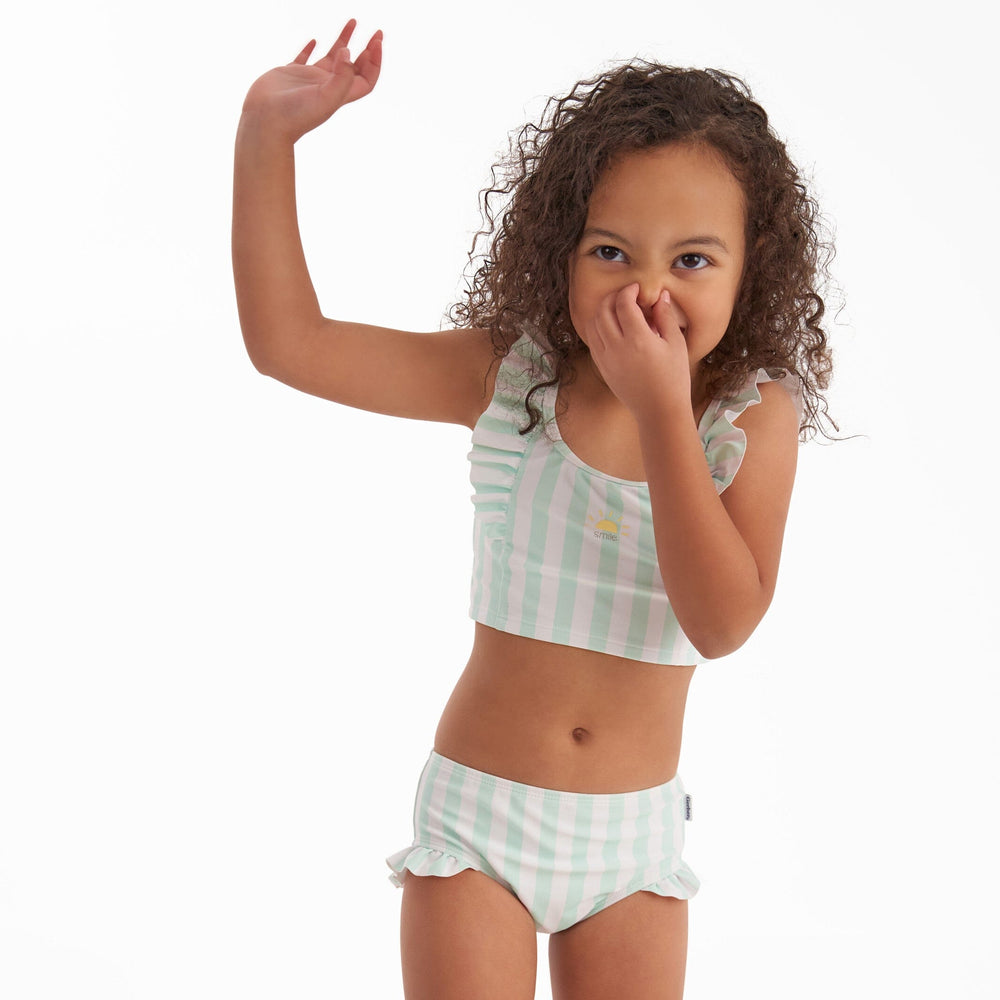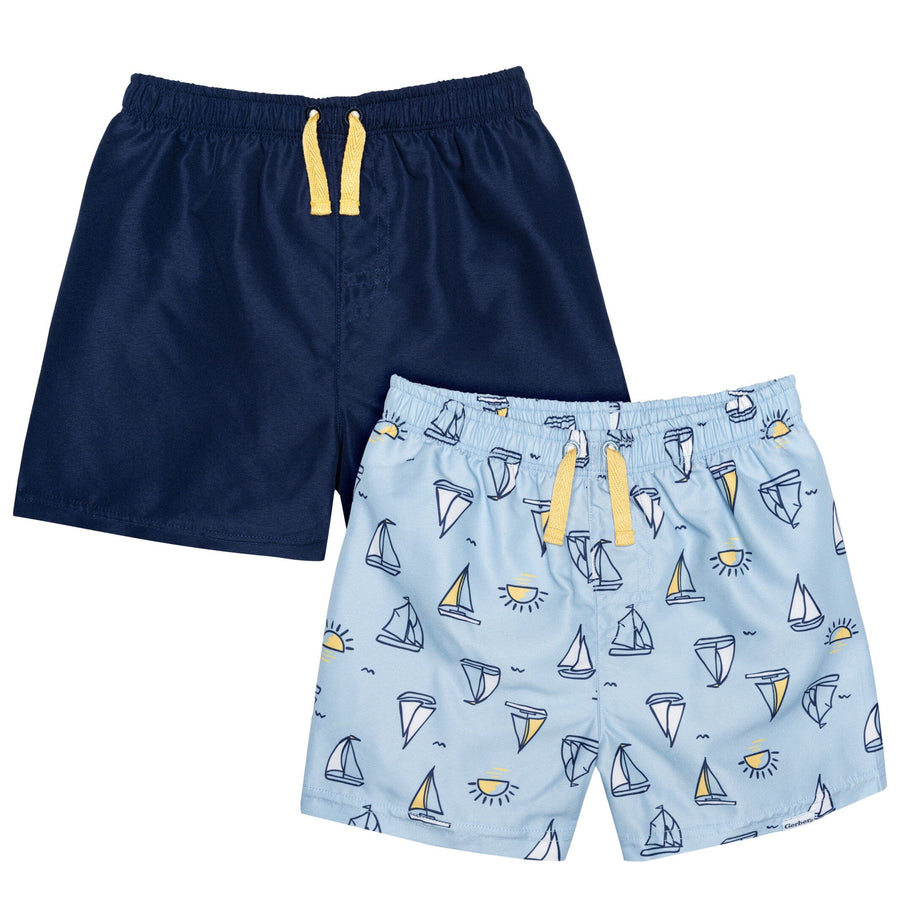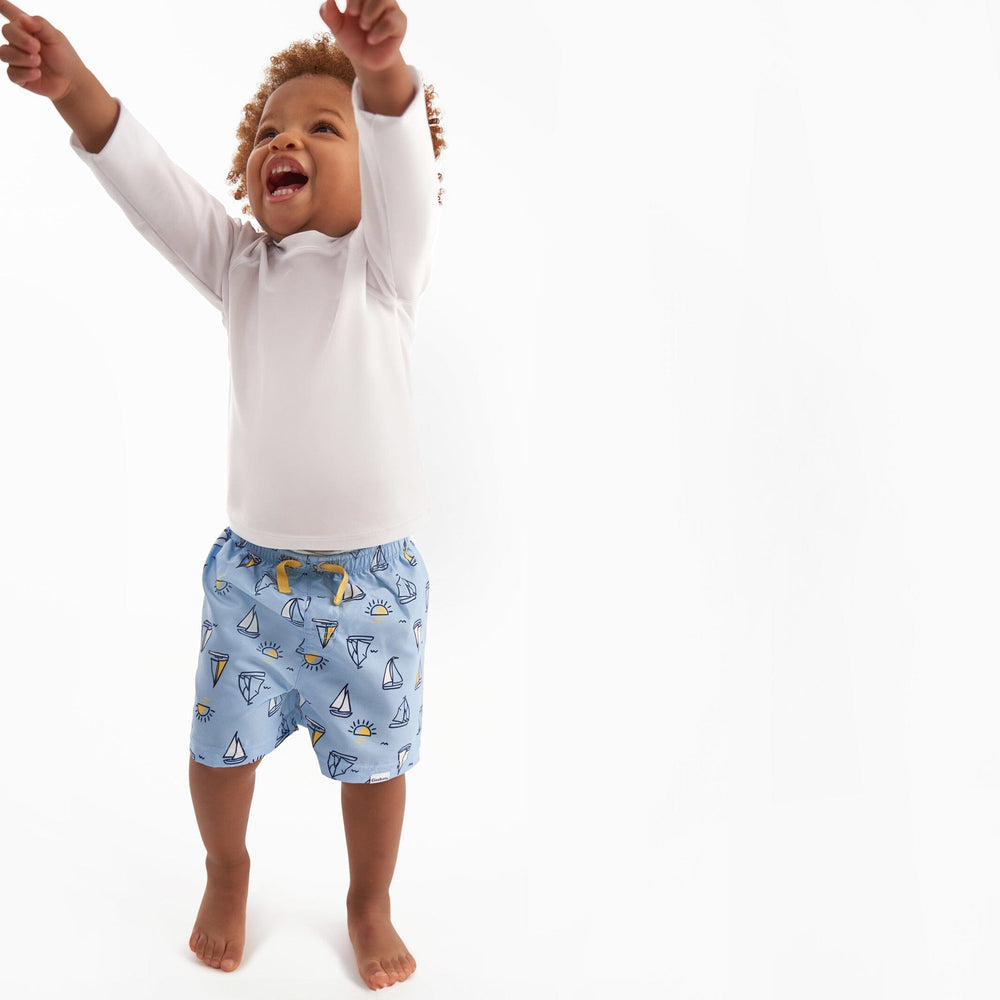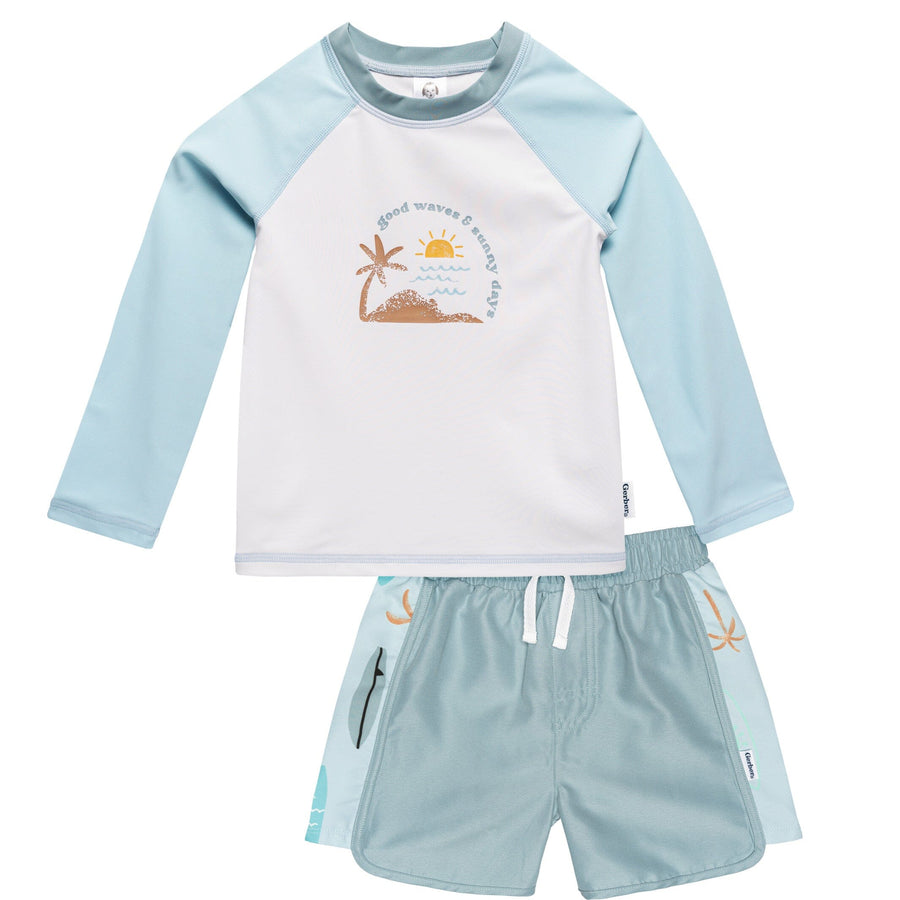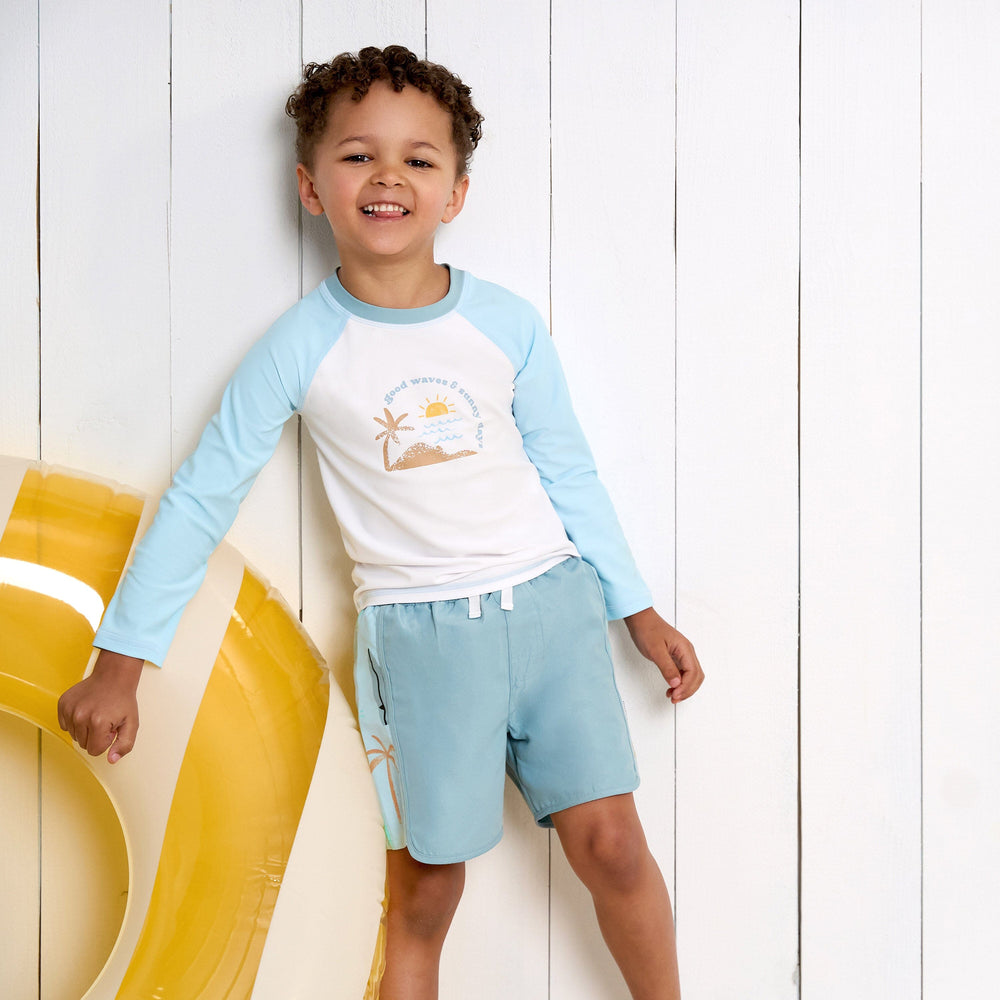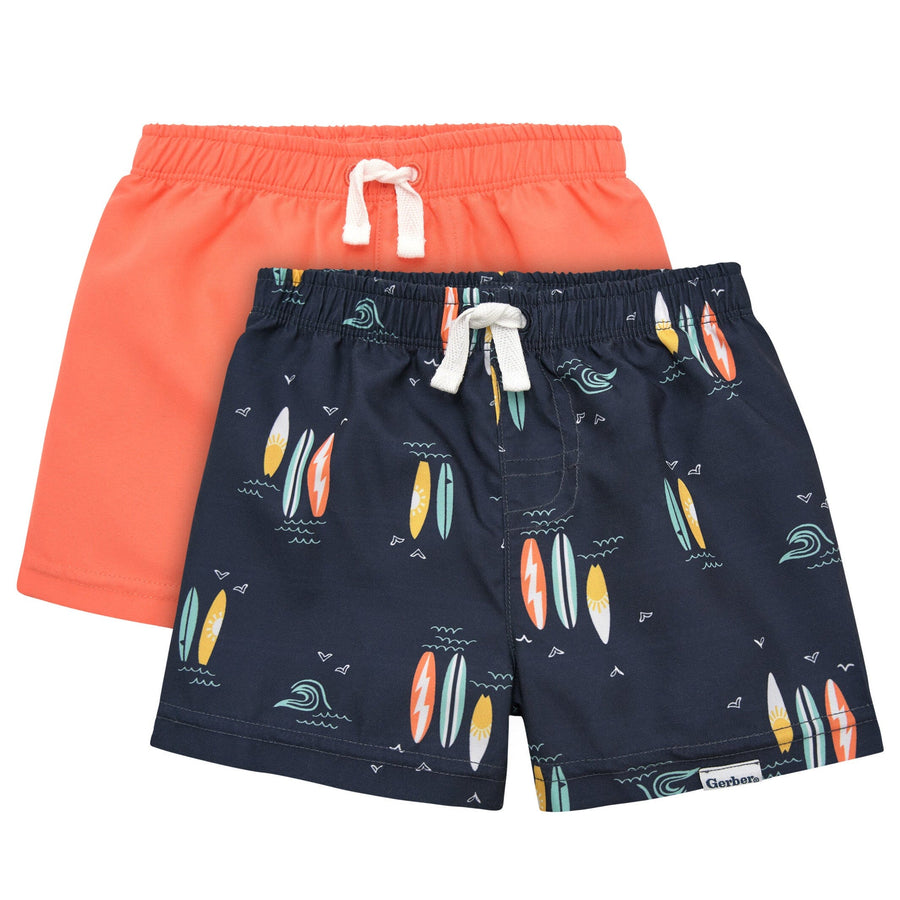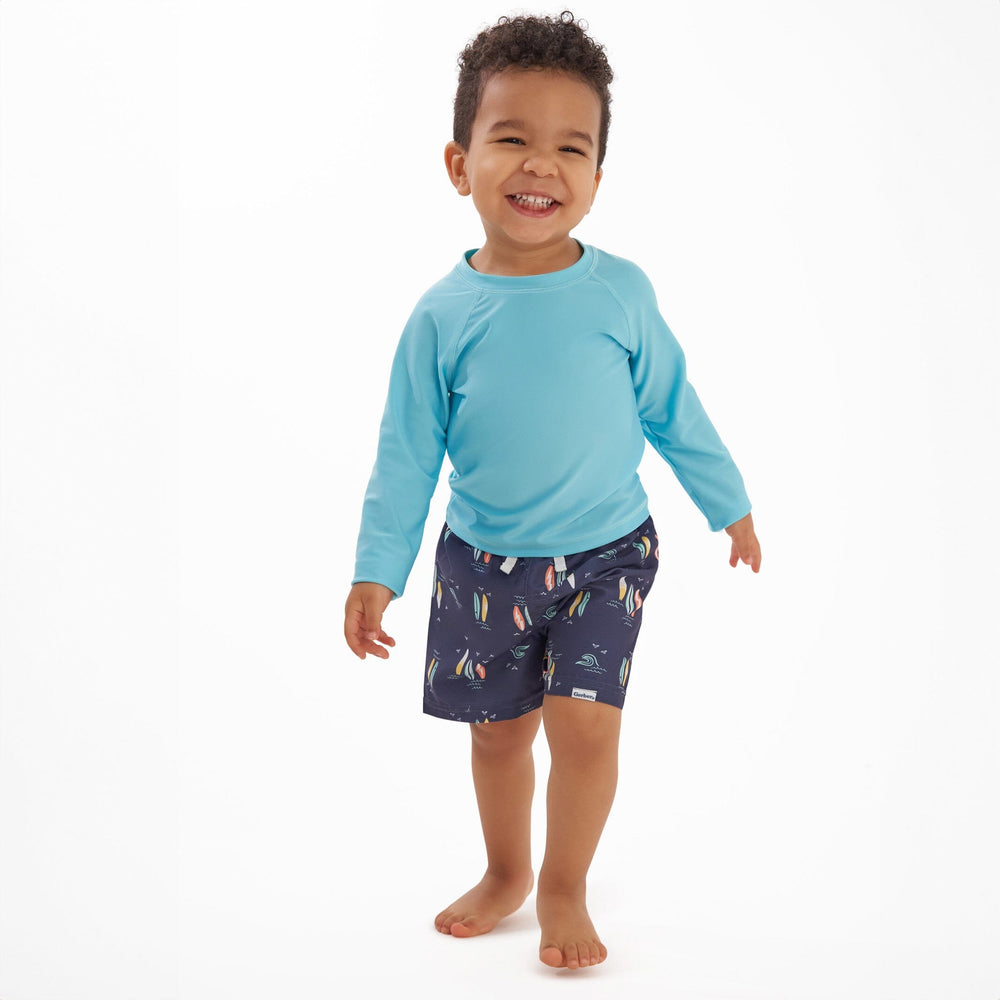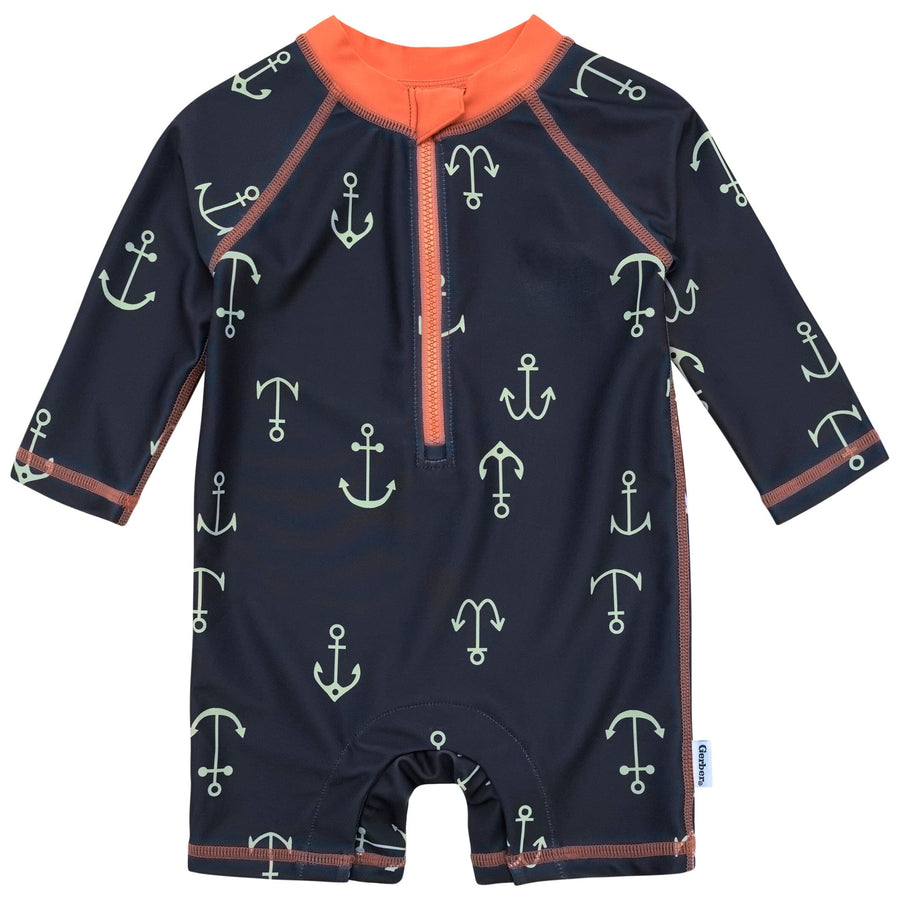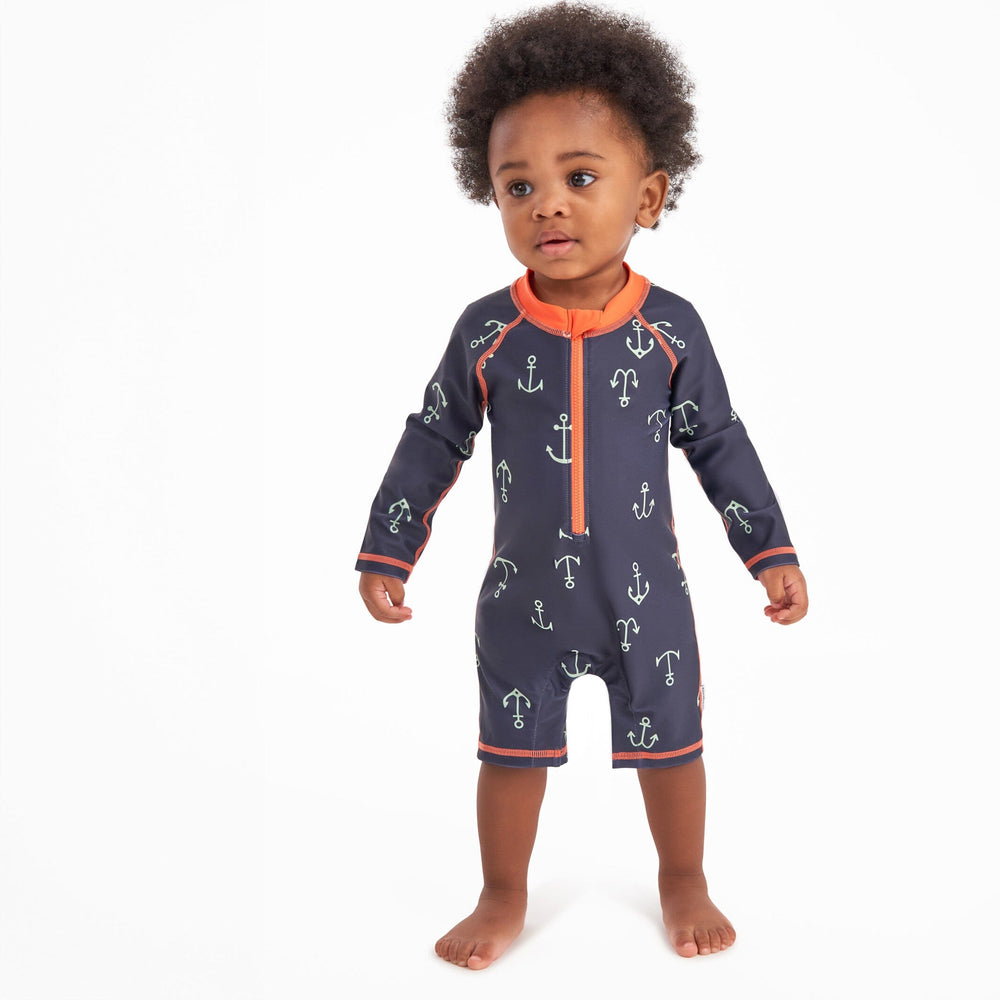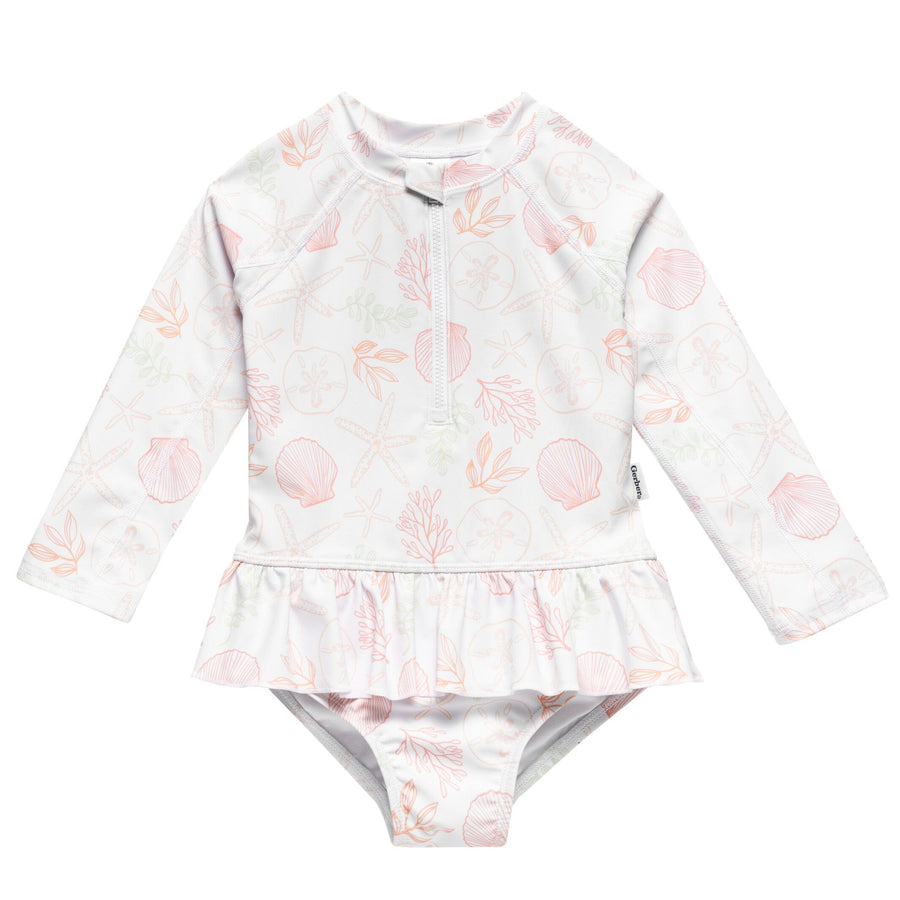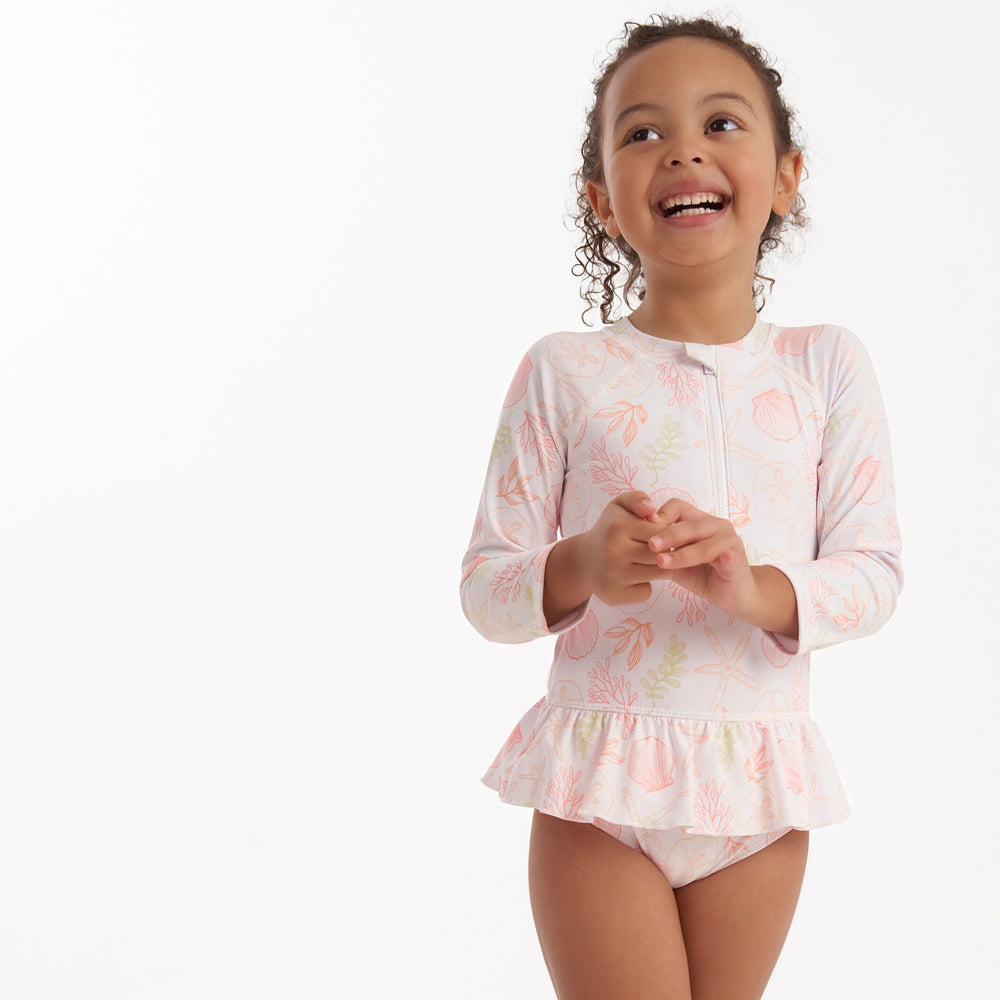The Ultimate Guide to Baby Swimwear & Toddler Swimwear

Summertime is upon us! You know what that means, don’t you? If you have a baby, it likely means a lot of time spent in the water. Whether you’re hitting the beach, the lake or the kiddie pool in your own backyard, choosing the right baby swim gear for your little tadpole is essential.
Getting baby ready for the water isn’t quite as simple as scooping up the cutest baby swimsuit you can possibly find. To keep your water-loving baby safe and happy in the water, there are a few important considerations you’ll want to keep in mind while shopping for baby swim gear. From choosing swim diapers to baby wetsuits, here’s everything you need to know about baby swimwear so that your little one can make a splash this summer.
Getting Started: Swim Diapers
Taking your baby swimming for the first time is an exciting and memorable experience. But you may be wondering: Can babies wear regular diapers to the pool?
The short answer is no. Regular diapers—whether cloth or disposable—will soak up tons of water and make the diaper sag. Not only is this incredibly uncomfortable for baby, but there’s also a good chance that the diaper will fall off due to the weight of the water.
Disposable diapers are especially a no-go in water. The hydrogels in disposable diapers can burst open in water, releasing tens of thousands of tiny beads that would be a complete nightmare to fish out of the pool.
Fortunately, there is a better option: swim diapers. Unlike regular diapers, swim diapers don’t swell up in the pool. They’re specifically designed to hold poo and only poo, meaning pee will easily pass through them (thank goodness for chlorine). So, if you’re planning a trip to the beach or the pool with baby, be sure to put your little cutie in a regular diaper for the car ride over to avoid a potential accident.

Who Should Use Swim Diapers?
Swim diapers are usually recommended for babies between ages 0 and 18 months. Children above the age of 18 months who aren’t potty-trained will also need to use one for public swimming pools to reduce the likelihood of fecal incidents, which can pose a risk for spreading germs.
Note: Swim diapers do NOT prevent runny poo from leaking into the pool. The CDC recommends staying out of the water if your kiddo is sick with diarrhea.
Types of Swim Diapers
When it comes to swim diapers, you have two options: reusable and disposable. Many parents find that reusable swim diapers are better for local trips to the pool, while disposable swim diapers are a convenient option for travel. Some parents use a disposable on the bottom and a reusable on top for double the protection.
- Reusable Swim Diapers: If you’re using cloth diapers for your little one, you’ll likely want to use reusable swim diapers. Reusable swim diapers (aka, cloth swim diapers) can be used again and again, making them super eco-friendly. Reusable swim diapers are also soft on baby’s skin and will save you money if you and baby swim a lot. If you go the reusable route, be sure to buy a style that snaps on the side. Otherwise, you’ll have to pull a poopy diaper down baby’s legs.
- Disposable Swim Diapers: Disposable swim diapers are meant to be thrown away after one use, which makes them the more convenient option. They’re also cheaper if you only plan to swim with baby a few times this summer. However, they can absorb water more easily than reusable diapers, which can weigh the diaper down and be uncomfortable for baby.
Tip: If you’re going swimming a lot this summer, plan to buy at least two swim diapers for baby. You don’t want to cut your beach or pool trip short just because baby had an accident in her swim diaper and you didn’t have a clean one on hand.
What to Look for in a Baby Swimsuit
Swim diaper—check. Next up? An adorable baby swimsuit that will make everyone “aww” over your precious little one. Baby swimsuits come in a wide variety of sizes, colors, prints and styles to suit every age and need.
As you shop for baby swimwear, here are a few important things to look for:
- Sun Protection: Since babies have such delicate skin, protecting your little one’s skin should be a top priority for outdoor water play. According to the American Academy of Pediatrics, the best way to keep a baby safe from the sun is by covering them up. Choosing a baby swimsuit made with UPF 50+ fabric (like our baby and toddler swimsuits) can help keep baby safe from the sun while they splash around outdoors.
- Comfort: You want your baby to have a wonderful time in the water. Choosing a baby swimsuit that is super comfortable (read: no itchy tags or straps that dig in) is critical to ensuring that baby has a good experience. Look for materials that are soft against baby’s skin and stretch for maximum comfort.
- Fit: Buying a well-fitting swimsuit for baby can be challenging because babies come in different shapes and sizes. If your child is bigger on top than they are on the bottom, look for matching swim separates (such as a rash guard and swim trunks) to help you nail down the perfect fit.
- Durability: Resist the urge to buy the cheapest baby swimsuit you can find. Not only will you compromise baby’s comfort, but the cheap material of the swimsuit will get worn down faster by chlorine, salt and UV rays. Investing in a long-lasting swimsuit for baby is especially important if you live in a region with year-round warm weather, as you’ll likely be spending more time in the water.
Baby Swimsuits for Babies From 0-3 Months
Many parents can’t wait to shop for baby’s first swimsuit. All babies look cute in baby clothes, but there’s something about a baby swimsuit that tugs at the heartstrings.
Whether you’re taking baby-parent swim lessons or you’re splashing around in your pool at home, here are a few important factors to consider when choosing a swimsuit for babies aged 0–3 months:

- Warmth: Since babies can’t regulate their temperature as well as adults, it’s important to check the water temperature and consider baby’s warmth. Although the water may feel perfectly fine to you, it could be too chilly for a newborn. A neoprene baby wetsuit can help keep your baby warm and comfortable both in and out of the water. If baby will be playing outside, choose a wetsuit with full arm and leg coverage and built-in UPF for maximum sun protection. For indoor water play, choose a wetsuit that leaves their legs uncovered to encourage kicking in the water.
- Skin Sensitivities: Newborns often have sensitive skin which can be easily irritated by the chlorine in the pool. If your baby has infant atopic dermatitis (aka, eczema), you’ll want to choose a baby swimsuit that will protect your little one’s skin while she swims. There are baby wetsuits and swim hats you can buy that are specifically designed to keep eczema creams in place while baby splashes about in the pool.
Tip: If your baby has eczema, find out when the pool attendants add chlorine to the pool and try to schedule your swimming lesson a few hours afterward when chlorine levels aren’t as high.
Baby Swimsuits for Babies From 3-6 Months
So, you’re out of the newborn stage (phew!) and baby is becoming more active.
Here are some additional things to keep in mind when choosing a baby swimsuit for babies aged 3-6 months:

- Increased Energy and Activity: Has your baby been kicking up a storm lately? At this age, babies have more control over their bodies, whereas before, they kicked mainly out of reflex. To accommodate your little one’s increased activity, consider choosing a baby swimsuit that doesn’t restrict their tiny legs (i.e., a baby wetsuit or a rash guard and swim bottom).
- Diaper Changes: As your baby’s energy levels increase, you may be able to go for longer stretches at the beach or the pool. Expect to change your baby’s swim diaper more often as a result. To make the diaper changing process easier, choose a baby swimsuit that you can get on and off your baby with relative ease. Consider a baby wrap wetsuit which is designed to open at the front for fuss-free changing.
- Comfortable Fit: Babies double their birthweight around the five-month mark, according to experts at the Bump. If you’ve got a chunky baby on your hands, be aware that baby swimsuits tend to run small. Check the size chart for baby swimwear before you buy to ensure a snug yet comfortable fit.
Baby Swimsuits for Babies From 6-12 Months
Although the American Academy of Pediatrics doesn’t recommend formal swim lessons until baby has reached their first birthday, many parents introduce their baby to the pool around the six-month mark with baby-parent swim classes. At this age, baby has a stronger immunity and is more active, making swim lessons a fun and safe bonding activity for both baby and parent.
If you plan to take baby to the pool, beach or lake this summer, here’s what you should look for in a baby swimsuit for ages 6-12 months:

- Leak Protection: As baby spends more time in the water, leak protection should be a top priority. A baby swimsuit with a built-in swim diaper will provide comfort for your little one and give you peace of mind while baby swims.
- Warmth: Baby’s increased activity at this age will help keep them warmer in the pool for longer, which may reduce the need for a wetsuit–depending on the temperature of the water. Check the water temperature before you and baby go for a dip. If you think the water is cold, your baby will, too. For colder temperatures, look for a sleeveless wetsuit that provides core warmth while giving baby the freedom to move.
- UV Protection: Once your baby is older than six months, you can apply sunscreen to small parts of their body. For additional protection against UV rays, consider choosing a baby swimsuit made with UPF fabrics. A long-sleeve one-piece swimsuit is a great choice for babies 6-12 months old because it provides warmth and coverage.
Toddler Swimsuits for 18-36 Months
At this age, your little tot will be extremely active in the water. He may be able to float unsupported on his back and play fun games in the pool. Even so, he’ll still need you to supervise him constantly
The right swimsuit can help your toddler take the water like a fish and hone his swimming skills. Here are a few swimsuit buying considerations for babies 18-24 months old:

- Buoyancy: Floating in water is a skill that every kid should learn eventually. If your toddler is hesitant to get in the water, the use of arm floaties or a swimsuit with built-in floatation aids can boost her confidence. Use floatation aids sparingly since they can give parents and children a false sense of security. Always be within arm’s reach of your toddler whether she is using floaties or not.
- Potty Training: If you’re in the middle of potty training, look for swimwear separates such as a rash guard and a swim bottom. These are easier for your tot to pull down and up when they need to use the potty. And think twice before taking your newly potty-trained kiddo to the pool or the waterpark without a swim diaper. All the excitement and distractions can too easily lead to an accident.
Getting Babies and Toddlers Ready for Fun in the Sun

From the cutest baby rash guards to the most adorable girls’ one-piece swimsuit, there are plenty of swim-worthy options that will help your little one make a splash this summer. But as you can see, there is a lot to consider before choosing a swimsuit for baby.
It can be hard to know what baby swimsuit is best for your kiddo. But with this baby swimwear guide, we hope that you’ll have an easier time choosing a swimsuit based on your baby’s age and needs. Happy splashing!





